Timothy G. Stout - Japanese Katakana for Beginners: First Steps to Mastering the Japanese Writing System
Here you can read online Timothy G. Stout - Japanese Katakana for Beginners: First Steps to Mastering the Japanese Writing System full text of the book (entire story) in english for free. Download pdf and epub, get meaning, cover and reviews about this ebook. year: 2007, publisher: Tuttle Publishing, genre: Children. Description of the work, (preface) as well as reviews are available. Best literature library LitArk.com created for fans of good reading and offers a wide selection of genres:
Romance novel
Science fiction
Adventure
Detective
Science
History
Home and family
Prose
Art
Politics
Computer
Non-fiction
Religion
Business
Children
Humor
Choose a favorite category and find really read worthwhile books. Enjoy immersion in the world of imagination, feel the emotions of the characters or learn something new for yourself, make an fascinating discovery.
- Book:Japanese Katakana for Beginners: First Steps to Mastering the Japanese Writing System
- Author:
- Publisher:Tuttle Publishing
- Genre:
- Year:2007
- Rating:5 / 5
- Favourites:Add to favourites
- Your mark:
Japanese Katakana for Beginners: First Steps to Mastering the Japanese Writing System: summary, description and annotation
We offer to read an annotation, description, summary or preface (depends on what the author of the book "Japanese Katakana for Beginners: First Steps to Mastering the Japanese Writing System" wrote himself). If you haven't found the necessary information about the book — write in the comments, we will try to find it.
Japanese Katakana for Beginners makes learning of katakana fast and effective by using memorable picture mnemonics, along with clear explanations, examples and lots of fun exercises—a method that has helped thousands of students lean katakana successfully in the United States and Japan. Picture mnemonics enhance memory by associating the shape and sound f each katakana character with combinations of images and English words already familiar to students. This book is organized into three main sections:
- The first introduces the basic 46 katakana characters along with writing tips and opportunities to practice writing them.
- The secondteachers the usage rules that allow students to write all Japanese sounds, providing more opportunities for practice.
- The third strengthens students skills through a wide range of exercises (word searches, crossword puzzles, fill in the blanks, visual discrimination, timed recognition quizzes, etc) designed to both increase the knowledge of the Japanese language and reinforce newly acquired writing skills.
Timothy G. Stout: author's other books
Who wrote Japanese Katakana for Beginners: First Steps to Mastering the Japanese Writing System? Find out the surname, the name of the author of the book and a list of all author's works by series.

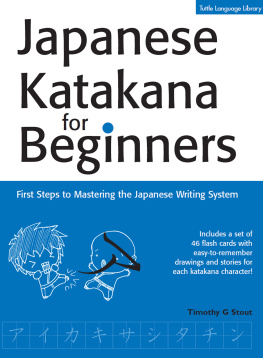

![Timothy G. Stout - Tuttle More Japanese for Kids Flash Cards Kit Ebook: [Includes 64 Flash Cards, Online Audio, Wall Chart & Learning Guide]](/uploads/posts/book/417746/thumbs/timothy-g-stout-tuttle-more-japanese-for-kids.jpg)

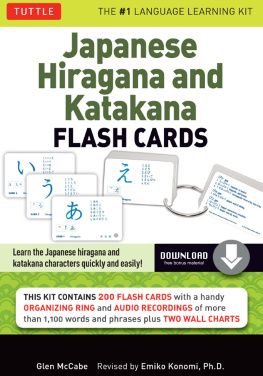
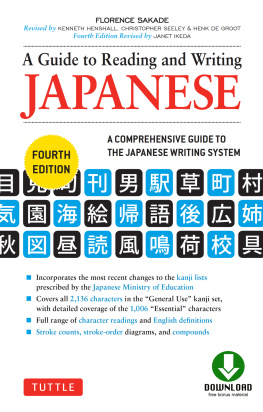



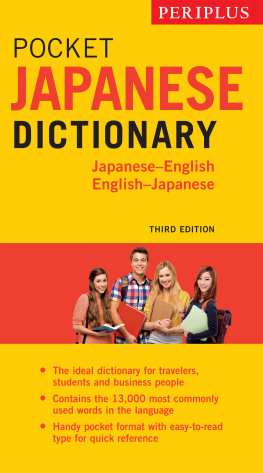


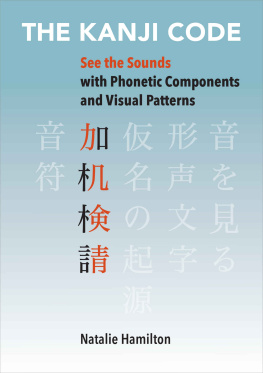


 Katakana Chart Activity (alone or with a small group): This is an excellent activity to improve your hiragana/katakana recognition skills and become familiar with gojon orderthe way dictionaries, web searches, etc., are organized.
Katakana Chart Activity (alone or with a small group): This is an excellent activity to improve your hiragana/katakana recognition skills and become familiar with gojon orderthe way dictionaries, web searches, etc., are organized.
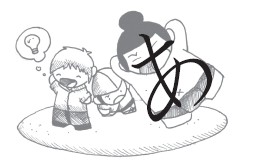 CONTENTS SECTION ONE SECTION TWO SECTION THREE FLASH CARDS
CONTENTS SECTION ONE SECTION TWO SECTION THREE FLASH CARDS  Published by Tuttle Publishing, an imprint of Periplus Editions (Hong Kong) Ltd., with editorial offices at 364 Innovation Drive, North Clarendon, Vermont 05759 U.S.A. and 61 Tai Seng Avenue, #02-12Singapore 534167. Copyright 2007 by Periplus Editions (Hong Kong) Ltd. All rights reserved. No part of this publication may be reproduced or utilized in any form or by any means, electronic or mechanical, including photocopying, recording, or by any information storage and retrieval system, without prior written permission from the publisher.
Published by Tuttle Publishing, an imprint of Periplus Editions (Hong Kong) Ltd., with editorial offices at 364 Innovation Drive, North Clarendon, Vermont 05759 U.S.A. and 61 Tai Seng Avenue, #02-12Singapore 534167. Copyright 2007 by Periplus Editions (Hong Kong) Ltd. All rights reserved. No part of this publication may be reproduced or utilized in any form or by any means, electronic or mechanical, including photocopying, recording, or by any information storage and retrieval system, without prior written permission from the publisher. 









 Introduction The aim of this book is to help beginning Japanese learners to quickly master katakana characters. Katakana is one of two sets of Japanese phonetic characters (used for their sounds, not their meanings). The other is hiragana. Both hiragana and katakana are essential to basic Japanese proficiency, but normally hiragana is learned first.
Introduction The aim of this book is to help beginning Japanese learners to quickly master katakana characters. Katakana is one of two sets of Japanese phonetic characters (used for their sounds, not their meanings). The other is hiragana. Both hiragana and katakana are essential to basic Japanese proficiency, but normally hiragana is learned first.